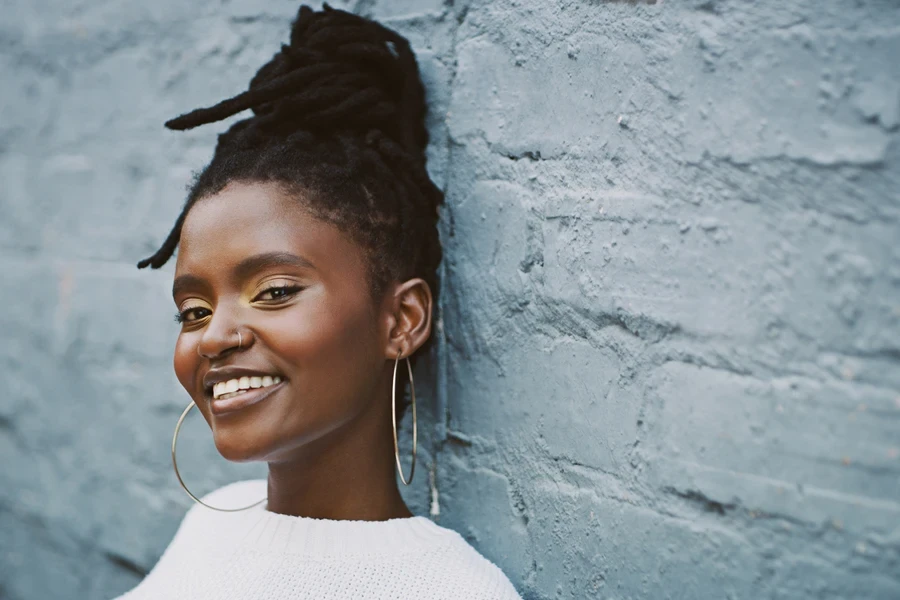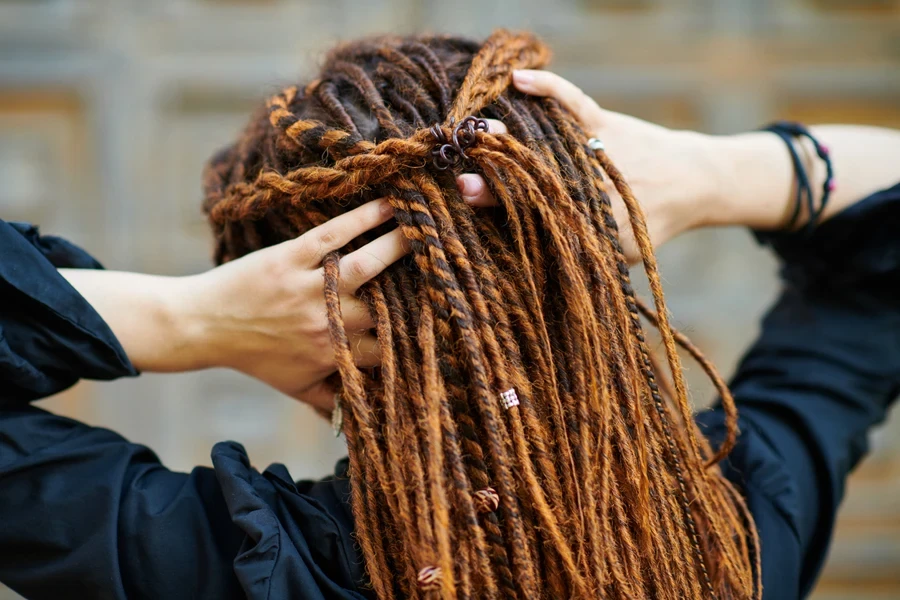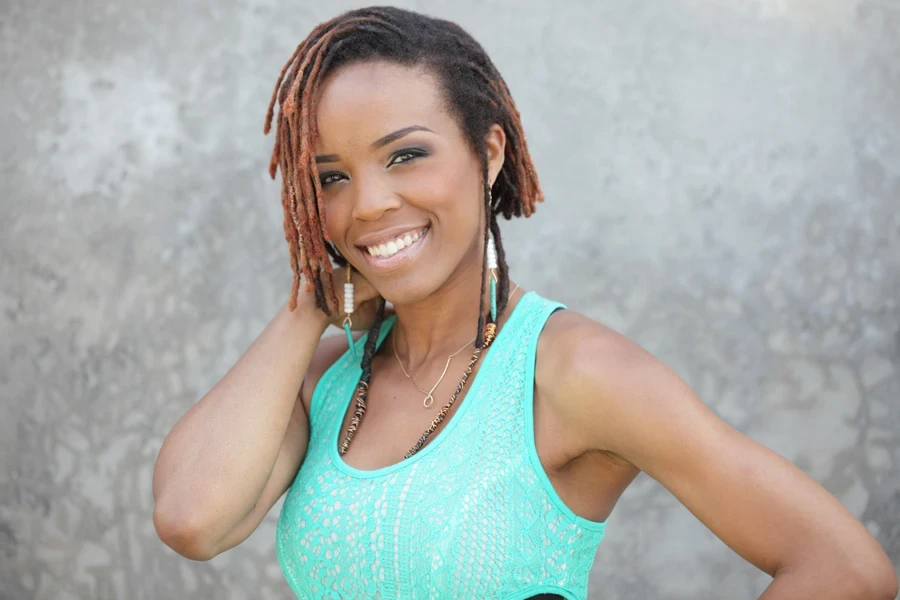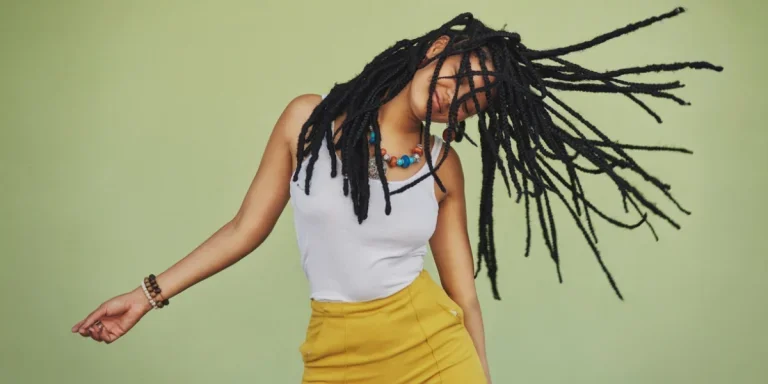Dreadlocks are locks of hair that have become compacted over time to form tubular skeins, which happen spontaneously if the hair grows wild without being combed, regardless of ethnicity or hair type. This hairdo has become increasingly popular over the years and evolved into different categories of locs hairstyles, including sisterlocks.
It is not clear where the term dreadlocks comes from. Literally translated, it means locks/curls of terror, in the sense of fear of God, a concept often mentioned by Christians and Rastafarians, a religion widespread in Jamaica. It can also refer to the anxiety felt by those who found themselves in front of warriors, presumably Africans, who had faced the first European invaders.
It’s impossible to write about sisterlocks installation without going through the history of dreadlocks, of which sisterlocks are a modern evolution dedicated to a female audience.
Table of Contents
The history of dreadlocks
How sisterlocks are installed
Creating sisterlocks
Other characteristics
Final thoughts
The history of dreadlocks

The first figurative evidence of dreadlocks dates back to 3,600 years ago: wrestlers are shown with dreadlocks in ancient Greece, and it seems that the Egyptians and the Sumerians also used to wear this hairstyle. Even in the sacred Hindu texts, there is mention of natural hairstyles called Jata, while in the Bible, there is a reference to Samson’s hair being called locks instead of hair.
Up to these days, across many cultures, dreadlocks are much more than a fashion statement, as they play a role in human spirituality. According to many spiritual texts, our vital energy (prana) comes out through the head and long hair, and dreads would be able to delay this process.
The most interesting part of the history of dreads certainly concerns the Rastafari Movement, a religious/spiritual movement born in Jamaica in the last century. The island was colonized immediately after the discovery of America by the Spanish and then by the English. The Spanish decimated the native population, as happened to other populations of South America, leading to extinction by 1600. When Jamaica subsequently came under English rule with the slave trade, approximately 600,000 Africans were deported.
The descendants of these enslaved people gave life to a religion based on the Bible, starting in the 30s of the last century; through various interpretations, this creates a spiritual bridge with Africa. From here was born the reggae music that, in the 70s, thanks to Bob Marley, spread globally and brought its message of common well-being, spiritual purity, and rejection of the Western lifestyle centered on money and power.
From the 70s to today, dreadlocks have evolved into a political, religious, or style statement. Locs have been adopted by music stars, actors, athletes, and musicians worldwide, who have contributed to universalizing this style. Aside from Bob Marley, an absolute icon of Rastafarianism, there is Whoopi Goldberg, who has always worn them, along with Lenny Kravitz, Lisa Bonet, Zendaya, and Shakira.
How sisterlocks are installed

There are various ways to make dreads naturally or with different techniques. Some create them by braiding the hair or by knotting it permanently. Of course, in the long run, these techniques might ruin the fiber of the hair and cause damage to the skin.
Sisterlocks are an evolution of dreadlocks, created in 1993 by Dr. Joanne Cornwell as a natural and protective hairstyle alternative for Black women. Originally designed for women of color, Sisterlocks have since gained widespread popularity and can be adapted to suit various hair types.
The interlocking system used by a certified Sisterlocks consultant allows the creation of separate and uniform braids smaller than traditional ones. This way, the hair stays healthy and in order and can rest and grow without stress and heat.
Also known as “microlocs,” they offer freedom of choice to anyone who wears them, as there’s no need to use specific hair products, combs, and brushes.
Creating sisterlocks

Sisterlocks are braided from tip to root with the appropriate tool to minimize tension. The operation can take from a couple of hours to several days, depending on the length of the hair, the density, the size of the loc, the position, and the experience and manual skill of the person doing it.
Locs can be made using the traditional palm roll technique, with two-strand braids, braids, crochet, etc. Microlocs can be started with finger coils and interlocks. The average number of locs obtained is 400 but varies according to the size of the head and the length and density of the hair.
Sisterlocks are made on very small sections of hair. For this reason, they are thin and light. Once divided into sections, these will be lined up to serve as a guide during the application. Sisterlocks can only be made with natural hair; once extensions have been added for particularly poor hair mass, they are no longer considered sisterlocks but microlocks.
Other characteristics

Sisterlocks must be renewed every 4/6 weeks. At least 6 months must have passed since the first hairstyle to tighten them again. People can wear them in different hairdos, loose or gathered in a chignon or ponytail. Sisterlocks offer more variety as they can be styled just like natural hair down, being thinner.
Finally, sisterlocks can complement natural hair, showing off any woman’s personality, and are a great daily option. They are low maintenance and very versatile. Originally designed for curly and full hair, they work well with fine and thin hair but not damaged hair, as setting them could worsen the damage. They do not require a lot of hair products to be used on the scalp and hair, therefore reducing buildup.
Final thoughts
Sisterlocks represent a legacy of cultural pride, self-care, and individuality. Rooted in the history of dreadlocks and designed to protect and empower, sisterlocks offer a natural, low-maintenance solution for women embracing their true texture.
Whether you’re drawn to them for their beauty, versatility, or spiritual connection, sisterlocks prove that authenticity never goes out of style.




